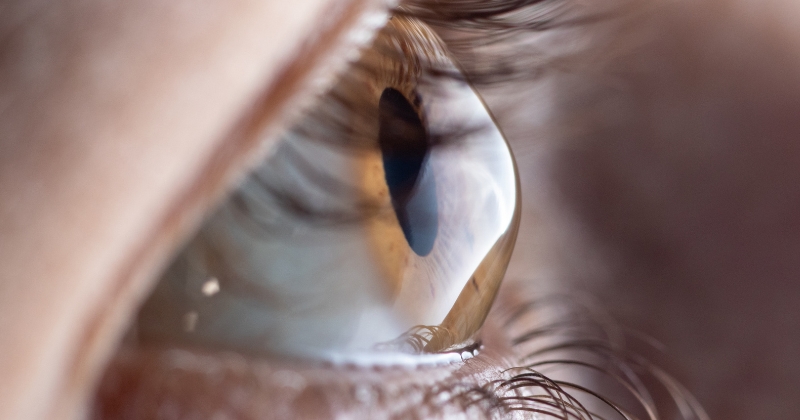Keratoconus is an eye disorder, which results in thinning of the cornea. The cornea is the outer lens of the eye and it has a dome shape like a ball. In this condition, the structure isn’t strong enough to hold the shape of the cornea, so it bulges outwards like a cone. Keratoconus occurs most commonly in late childhood and early adulthood. It can occur to anyone but is more commonly seen in Asian descents.
Keratoconus Sign
As the cornea becomes more irregular in shape these symptoms may develop:
- Blurry vision
- Double vision
- Nearsightedness/ Myopia
- Irregular astigmatism
- Glare and Light sensitivity
Causes Of Keratoconus
Collagen, the tiny fibers of protein in our eye helps to hold the cornea in its natural shape. When the fibers get weak, they are not strong enough to hold the shape of the cornea, so it bulges out in a conical shape.
More causes are:
1. Genetics
Genetics is one of the main causes of Keratoconus. This disorder might be running from the past few generations in the family of the patient.
2. Excessive Eye Rubbing
Rubbing the eye too harshly and excessively is also, a reason that gets the cornea damaged.
3. Environmental and hormonal factors
Keratoconus usually develops in the young years of a person. Hormonal changes during those years are also a reason one might have Keratoconus. Excessive pollution is an environmental factor of Keratoconus. That’s why there are more cases in the northern part of India.
Keratoconus Treatment:
The early stages of Keratoconus can be corrected with eyeglasses and certain lenses like:
1. Custom soft lenses
Custom soft lenses are designed to correct mild to moderate Keratoconus.
2. Gas permeable lenses
When eyeglasses and custom soft lenses cannot correct the keratoconus vision, Gas permeable lenses are the best option to have a better quality of vision.
3. Hybrid contact lenses
Hybrid lenses are hard in the center and surrounded by a soft skirt. It is the best of both worlds; the hard lens gives clear vision and the soft lens provides comfort. The new generation of hybrid lens technology has improved, giving a better quality of vision than before.
4. Piggyback lens combination
It is a combination of RGP lenses and soft lenses. Some people find this combination more comfortable and it also provides good vision correction.
Few cases of Keratoconus will progress to a point where these corrective methods won’t work. Then only surgery will help to treat the condition.
Surgical Treatment for Keratoconus
1. Corneal Transplant
In some cases, Keratoconus progresses to a point where thinning becomes excessive, scarring also occurs and vision correction is no longer possible. A corneal transplant is the only option.
2. Corneal Ring implants
This is an alternative surgical method to corneal transplant. Intrastromal corneal ring segments are inserted in the cornea to flatten the peak of the cone and bringing back the natural shape of the cornea.
3. Epikeratophakia
This is a rare nonpenetrating keratoplasty also known as epikeratophakia. It may be viewed as an option in a number of cases, especially for young people and this procedure requires a greater level of skill on the part of the surgeon.
4. Corneal collagen cross-linking
Corneal collagen cross-linking is the process in which corneal tissue is strengthened to stop the bulging of the eye’s surface.
Suggested Read: These Are Some Of The Most Strange Diseases And Syndromes Around The World
Keratoconus is a rare disorder but the vision can be treated both ways, through lenses or surgically in some advanced cases. In our everyday life, we are so much exposed to computer and mobile phone screens; it declines our eye health in long term. One can perform eye yoga and convergence eye exercises with the help of a pen to maintain good eye health and avoid any kind of eye problems.


